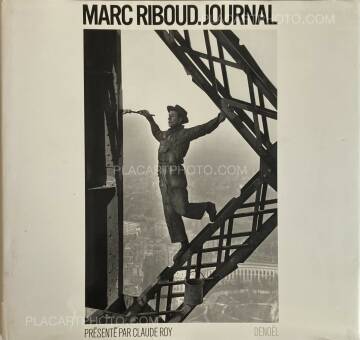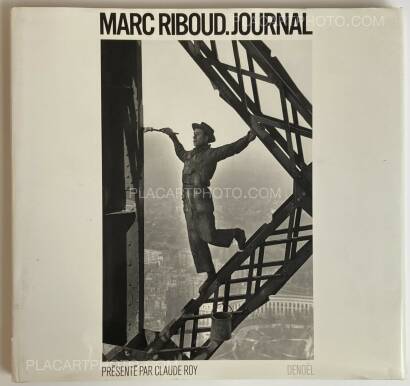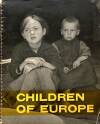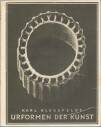MARC RIBOUD. JOURNAL

Marc Riboud
MARC RIBOUD. JOURNAL
Photographs: Marc Riboud
Text: Marc Riboud, Claude Roy
Publisher: Denoël
120 pages
Pictures: 93
Year: 1986
ISBN: 2-207-23306-5
Price: 40 €
Comments: Hardcover under illustrated dust jacket, 28,8 x 30,3 cm, b&w photographs. First edition. In very good condition, other than signs of wear on the bottom of the dust jacket as well as a tear on the dust jacket at the bottom of the spine.
The photographs in this book were exhibited at Paris' Musée d'Art Moderne during spring 1985.
Sensitive and sympathetic, Riboud's approach differs from the ‘shock’ images of the usual reportage. What counts for him is honesty: "you shouldn't allow yourself to be led into photographing the exceptional... Objectivity exists even less in photographic reporting than in other forms of journalism... In a report, the truth lies in everyday life". Modest, he likes to say that "photography should not try to prove things, but it can convince when it doesn't try to do so. It cannot change the world, but it can show the world, especially when it is changing. Photography can teach people to see, it can make them want to see, and so give them a taste for life".
Marc Riboud was born near Lyon in 1923. He took his first photographs in 1937, using the camera his father had used in the trenches during the First World War (a Kodak Vest Pocket). In 1943, he joined the Resistance in the Vercors and volunteered on the Alps front. After the war, he studied engineering and worked in a factory in Lyon, which he left in 1951 to set up as a freelance photographer. His brother introduced him to Henri Cartier-Bresson, and he decided to move to Paris to sell his photographs.
He published his now-famous photograph of a painter on the Eiffel Tower in Life magazine, and became a member of the Magnum agency in 1953. Two years later, thanks to financial aid from UNESCO and the WHO, he made his first major trip: in six months he travelled by car to Calcutta, via the Middle East and Afghanistan, and stayed in India for a year. He reached China in January 1957 for an initial four-month stay (he was one of the first Westerners to visit the People's Republic of China). He then travelled to Indonesia, the Philippines, America, the USSR and Africa. He visited Algeria several times, before, during and after independence. He met Fidel Castro in Cuba (1963), spent a week on the American nuclear aircraft carrier off the coast of Vietnam (report published in Le Monde in 1966) and carried out several reports in North Vietnam, Laos and Cambodia (1968-1969) which were published in numerous magazines in Europe and the United States. He then went on to cover the war in Bangladesh, meeting Indira Gandhi (1971), followed by Czechoslovakia, Israel, the United Arab Emirates, Iraq, Saudi Arabia, Saigon... In the 1980s and 1990s, he returned regularly to the East and Far East, particularly to Angkor and China, to follow the changes in the countries he had known for so long.

















more books tagged »photoreportage« | >> see all
-
CHILDREN OF EUROPE
by David Seymour (Chim)
sold -
Operations
by Sophie Ristelhueber
Euro 50 -
Fotografías de Barcelona, 1958-1964
by Joan Colom
Euro 60
more books tagged »snapshot« | >> see all
-
Counting Grains of Sand 1976-1989
by Hiromi Tsuchida
sold -
Happiness in Black
by Chan Wai Kwong
Euro 40 -
Ryuseki (flowing Stones)
by Nobuyoshi Araki
sold -
Tokyo Silence (Signed)
by Yasuhiro Ogawa
sold -
Chihei Vol.6
by Collective
Euro 500 -
MEHERLATION (WITH OBI)
by Chikashi Tanaka
Euro 60
Books from the Virtual Bookshelf josefchladek.com













;jpg)


 Facebook
Facebook Instagram
Instagram